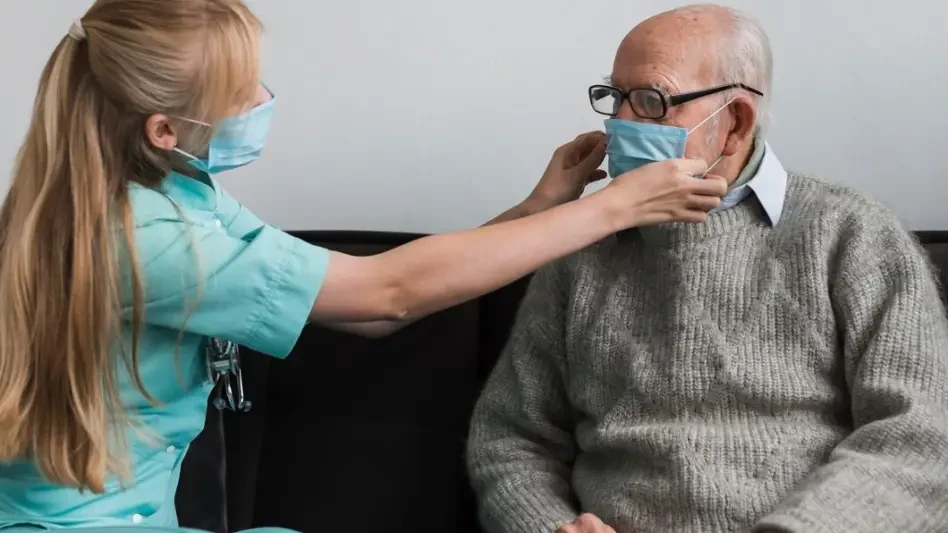The COVID-19 pandemic has left an indelible mark on healthcare systems worldwide, but in Italy, a nation with one of the oldest populations in Europe, the crisis has exposed stark vulnerabilities. With over 23% of Italians aged 65 and above, ensuring access to medical care for this demographic is not just a health concern but a societal imperative that demands urgent attention and resources. During the height of the pandemic, countless older adults faced unprecedented barriers to receiving essential care, raising critical questions about equity and resilience in public health frameworks. This report delves into the profound disruptions faced by older Italians, uncovering the scale of healthcare renunciation and the systemic challenges that must be addressed to safeguard this vulnerable group.
Overview of Healthcare Access Challenges for Older Adults in Italy During COVID-19
Italy’s national healthcare system, known for its universal coverage, was severely tested by the pandemic, particularly in meeting the needs of older adults. The country’s aging demographic, with a significant proportion over 65, relies heavily on consistent access to medical services for managing chronic conditions and maintaining quality of life. However, the sudden onset of COVID-19 overwhelmed hospitals and clinics, redirecting resources toward emergency response and leaving routine care for many elderly individuals sidelined.
This crisis amplified the vulnerability of older adults, a group already at higher risk of severe outcomes from the virus. The societal importance of protecting their access to healthcare cannot be overstated, as delays in treatment often lead to worsened health outcomes and increased long-term costs. The intersection of an aging population and a strained system created a perfect storm, highlighting the urgent need for adaptive solutions.
Key factors shaping this issue include the structure of Italy’s healthcare system, which, while robust under normal circumstances, struggled with capacity during the pandemic. Demographic aging further compounded the problem, as the demand for care outstripped supply in many regions. The unique nature of COVID-19 as a public health crisis introduced additional layers of complexity, with fear and service interruptions emerging as primary obstacles to care.
Key Findings from the Study on Healthcare Renunciation
Prevalence and Reasons for Forgoing Care
A staggering 40% of older Italians aged 65 and above reported forgoing necessary medical visits or diagnostic tests during the pandemic. This significant rate of healthcare renunciation reflects a deep-seated impact on public health, as skipped care often translates to undetected or untreated conditions. The scale of this trend underscores a critical gap in service delivery during times of crisis.
The primary reasons behind this behavior include fear of contracting COVID-19, cited by 33% of those surveyed, as the risk of infection in medical settings deterred many from seeking help. Additionally, 29% pointed to service disruptions caused by the emergency, with many facilities either closed or repurposed for COVID-19 patients. These dual drivers reveal a blend of personal hesitation and systemic failure as core barriers.
Emerging patterns also suggest that anxiety played a pivotal role, with individuals weighing the perceived danger of exposure against the need for care. Systemic issues, such as long wait times and canceled appointments, further eroded trust in the ability to receive timely treatment. Together, these factors paint a troubling picture of access during a critical period.
Disparities Among Vulnerable Groups
Delving deeper into the data, clear disparities emerge across demographic and socioeconomic lines. Women exhibited a higher likelihood of forgoing care, with an adjusted prevalence ratio (aPR) of 1.17, possibly due to greater caregiving responsibilities or heightened health concerns. Economic disadvantage also played a significant role, with renunciation rates rising sharply for those facing financial hardship (aPR up to 1.46 for severe difficulties).
Individuals with chronic conditions, particularly those managing two or more diseases (aPR of 1.25), and those with sensory impairments (aPR of 1.30) faced disproportionate challenges in accessing services. These groups often require frequent medical interventions, making service interruptions especially detrimental. The data highlights how systemic gaps hit the highest-need populations hardest.
Fear of infection and service disruptions did not affect all groups equally, with women and highly educated individuals showing greater apprehension (aPR of 1.32 and 1.35, respectively). Looking ahead, addressing these inequities demands targeted interventions to rebuild confidence and ensure that resource allocation prioritizes vulnerable populations. Tailored strategies will be essential to close these gaps and prevent future disparities.
Systemic and Personal Barriers to Healthcare Access
The pandemic exposed a complex interplay of systemic and personal barriers that hindered healthcare access for older Italians. On the systemic side, service disruptions led to canceled appointments and reduced capacity for non-emergency care, disproportionately impacting those with limited means to seek alternatives. Economically disadvantaged individuals often lacked the resources to navigate these obstacles, revealing deep-rooted structural inequities.
Personal barriers, such as fear of contracting the virus, compounded the issue, with many older adults opting to avoid medical facilities altogether. This apprehension was particularly acute among those with greater awareness of COVID-19 risks, reflecting how individual perceptions influenced health decisions. The combination of these factors created a formidable challenge to maintaining care continuity.
Mitigating these barriers requires a multifaceted approach, including better resource allocation to ensure essential services remain operational during crises. Public health messaging must also evolve to address fears directly, providing clear guidance on safety protocols to encourage care-seeking behavior. Strengthening community support networks could further help bridge the gap between personal concerns and systemic limitations.
Impact of the Pandemic on Healthcare Policies and Practices
The regulatory and operational landscape of Italy’s healthcare system underwent significant shifts during the COVID-19 crisis. Emergency measures, such as reallocating staff and facilities to manage virus surges, were necessary but often came at the expense of routine care for older adults. These policies, while aimed at curbing the pandemic, inadvertently restricted access to vital services.
Service delivery saw widespread interruptions, with many non-urgent procedures postponed indefinitely, leaving older patients in limbo. Unintended consequences included deteriorating health for those with chronic conditions and a backlog of cases that strained the system further. The crisis exposed the fragility of existing frameworks under extreme pressure.
Compliance with safety protocols became paramount, yet the need for adaptive policies to sustain care access grew evident. Future strategies must balance emergency response with the continuity of essential services, ensuring older adults are not sidelined. Lessons from this period emphasize the importance of flexibility and preparedness in healthcare governance.
Future Directions for Ensuring Equitable Healthcare Access
Looking toward the horizon, the path to equitable healthcare access for older Italians hinges on innovative solutions and systemic reform. Telemedicine stands out as a promising tool, offering a way to deliver care remotely and reduce infection risks. Expanding digital health platforms could transform how services reach isolated or mobility-constrained individuals.
Enhanced communication between healthcare providers and patients is another critical area for improvement. Clear, accessible information can help alleviate fears and guide older adults through evolving protocols. Additionally, infrastructure investments are needed to bolster capacity, ensuring that facilities can handle both routine and emergency demands simultaneously.
Ongoing monitoring of access barriers will be vital to adapt strategies over time, particularly from 2025 onward. Inclusive health policies that prioritize vulnerable groups must underpin these efforts, while resilience-building measures prepare the system for future public health emergencies. A proactive stance will be key to safeguarding care for all.
Final Reflections and Next Steps
Reflecting on the findings, the profound disruptions caused by the COVID-19 pandemic to healthcare access for older Italians painted a sobering picture of systemic strain and personal struggle. The high rates of care renunciation and stark disparities among vulnerable groups underscored the urgent gaps that emerged during the crisis. These challenges revealed the fragility of existing frameworks when faced with unprecedented demands.
Moving forward, actionable steps emerged as a clear priority. Policymakers and providers were urged to invest in digital health solutions like telemedicine to bridge access gaps, especially for those hesitant to seek in-person care. Strengthening infrastructure and refining public health messaging also stood out as essential to rebuild trust and ensure continuity.
Beyond immediate fixes, a long-term commitment to equity and adaptability shaped the vision for Italy’s healthcare future. Targeted support for economically disadvantaged and high-need populations was identified as a cornerstone of reform. By fostering resilience through continuous surveillance and innovative policies, the system could better withstand future shocks, protecting older adults as a fundamental priority.









